

The Ultimate Guide to the Pineapple Plant: From Growing to Harvesting
Introduction
In a world where houseplants reign supreme, the pineapple plant (Ananas comosus) stands out like a tropical superstar. Not only does it add a splash of exotic flair to your home, but it also offers the tantalizing possibility of home-grown fruit. Growing a pineapple plant is more than just a gardening endeavor; it’s a journey filled with patience, care, and a sprinkle of sunshine.
Picture this: You stroll through your kitchen, and there it is—a spiky green crown that promises sweet, juicy fruit. You might think, “Can I really grow this from a grocery store pineapple?” The answer is a resounding yes! With the right steps, your culinary masterpiece can start as a simple fruit from the supermarket.
But before you grab that crown and plant it in dirt, let’s chat about the fascinating history of pineapples. Did you know they were once the ultimate status symbol in Europe? That’s right. Spanish conquistadors brought this tropical treasure back in the 1700s, and it quickly became a must-have for the elite.
In this comprehensive guide, we’ll explore everything from its intriguing backstory to practical tips on care, propagation, and harvesting. You’ll learn how to nurture your plant and possibly impress your friends with your green thumb. Plus, we’ll uncover the types of pineapple plants you can cultivate, whether you’re after a sweet fruit or simply an eye-catching decoration.
So, grab your gardening gloves, a cheerful attitude, and let’s embark on this spiky adventure! The pineapple plant awaits you, ready to transform your space and satisfy your taste buds. Get ready for a journey filled with sunshine, growth, and, of course, delicious fruit!

How to Cultivate Your Pineapple Plant
Historical Context
The story of the pineapple is a juicy one! This tropical treasure made its grand entrance into Europe thanks to the Spanish conquistadors in the 1700s. Picture it: brave explorers returning from lush, sun-soaked lands, bringing with them not just tales of adventures, but also exotic fruits that would captivate the European palate.
Initially, the pineapple was a rare gem. Its unique taste and striking appearance made it a luxury item. Only the wealthiest could afford to enjoy it, leading to its rise as a status symbol. The elite flaunted these spiky fruits at lavish banquets, where they became the centerpiece of extravagant displays. Imagine a grand feast with a pineapple as the star!
In Britain, the pineapple’s allure grew even stronger. It became a symbol of prestige and sophistication. Society’s elite began to grow pineapples in greenhouses, showcasing their horticultural prowess. The fruit was so coveted that some would rent pineapples for events, just to impress their guests. Yes, you read that right—renting fruit!
This delightful history adds a layer of charm to the pineapple plant. What was once a luxury is now a delightful challenge for DIY gardeners. So, as you nurture your own pineapple plant, remember that you’re part of a long tradition of pineapple enthusiasts. Who knows? Maybe one day, you too will be hosting a lavish gathering with your home-grown fruit!
Types of Pineapple Plants
Pineapple plants come in various flavors—literally and figuratively! Let’s break them down into two main types: edible and ornamental.
First up, we have the edible varieties. These are the big boys of the pineapple world. They grow large, juicy fruits that are perfect for snacking, smoothies, or even piña coladas. The classic variety, Ananas comosus, is often the go-to choice for home growers. These plants can produce sweet, succulent pineapples that make your taste buds sing.
On the flip side, there are ornamental varieties. These smaller pineapples are more about looks than taste. They don’t pack the same sugary punch as their larger counterparts. Instead, they are grown primarily for their striking foliage and unique shapes. Think of them as the fashionable accessories of the plant world! Varieties like Ananas comosus var. variegatus flaunt vibrant colors and make excellent conversation starters on your windowsill.
Whether you’re in it for the fruit or just want to add a splash of tropical flair to your decor, there’s a pineapple plant for everyone. So, choose your type wisely and prepare for a rewarding experience!

Growing Your Own Pineapple
Ready to grow your very own pineapple? It all starts with the crown of a supermarket fruit. Follow these simple steps, and you’ll be on your way to becoming a pineapple parent in no time!
1. Choose Your Pineapple: Pick a ripe pineapple from your local grocery store. Look for one with healthy green leaves and a firm body. Avoid any with soft spots or signs of decay.
2. Cut the Crown: Using a sharp knife, carefully slice off the crown. Make sure to include about an inch of fruit below the leaves.
3. Remove Lower Leaves: Trim off the lower leaves to expose the base. This will help the plant establish roots later on.
4. Dry It: Let the crown dry for a day or two. This helps prevent rot when you plant it.
5. Plant It: Fill a pot with a mix of orchid compost and peat-free potting mix. Place the crown in the soil, burying it about an inch deep. For the best results, consider using an Orchid Potting Mix to ensure proper drainage and aeration.
6. Water Sparingly: After planting, water lightly. Keep the soil moist but not soggy.
Now, onto the timeline! Patience is key here. It typically takes about three to four years for your pineapple plant to produce fruit. That’s right—this isn’t a fast-food crop! But trust us, the satisfaction of biting into your home-grown pineapple makes the wait worthwhile.

Growing Conditions
Let’s talk about what your pineapple plant craves to thrive!
Light Requirements: Pineapples are sun worshippers. They need bright, warm locations to flourish. Ideally, place your plant in a sunny windowsill or a greenhouse where it can soak up those rays. They can handle some direct sunlight, but too much can scorch those lovely leaves. Make sure to rotate the plant occasionally for even light exposure.
Temperature Needs: When it comes to temperature, pineapples prefer warmth. Keep them in a cozy environment—ideally above 16°C (60°F). If you’re lucky enough to have a garden, feel free to move your plant outside during the summer months. Just remember to bring it back indoors before the autumn chill sets in.
With the right conditions, your pineapple plant will thrive and reward you with a bountiful harvest. So, give it the love and attention it deserves, and watch it grow into a tropical masterpiece!

Planting and Care
Planting a Pineapple Plant
Planting your pineapple is an exciting step! Start by mixing orchid compost with peat-free multi-purpose compost. This blend provides excellent drainage, which is essential for preventing root rot.
You can keep your pineapple in its original pot, especially since they aren’t long-lived plants. If you notice it outgrowing its space, consider repotting into a slightly larger container. Just be gentle with those roots!
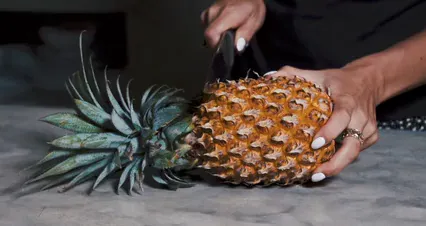
General Care
Now, onto the essential care tips to keep your pineapple happy.
Watering Guidelines: Water your plant when the top few centimeters of soil feel dry. In the spring and summer, give it a good soak, allowing excess water to drain. In winter, let the soil dry out a bit more between waterings.
Fertilization Schedule: Pineapples appreciate a little extra love. Feed them every two weeks with a balanced liquid fertilizer, like an Organic Pineapple Fertilizer during the growing season. In the winter, cut back to once a month.
Regularly dust the leaves and trim any dry ones to keep your pineapple looking its best. Rotate the pot every so often to encourage even growth. With these care tips, your pineapple plant will thrive and reward you with its glorious presence!
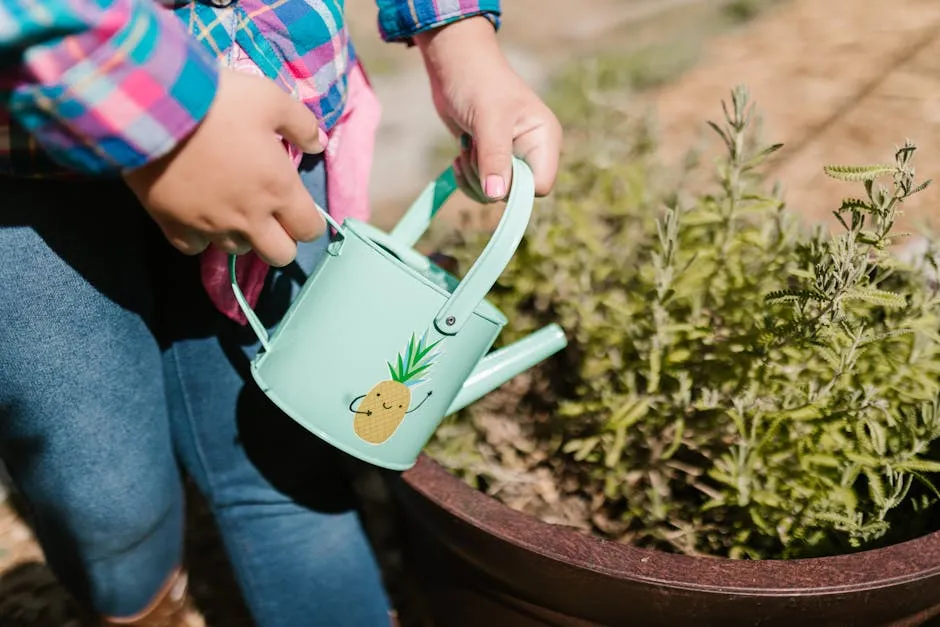
Harvesting
Knowing when to harvest your pineapple is crucial. Look for signs of ripeness about 20 to 24 months after planting. The color is key! When the fruit turns a vibrant orange-yellow, it’s time to act. Give it a gentle squeeze; if it feels firm yet slightly soft, it’s ready. A sweet aroma is another good indicator. If it smells like a tropical paradise, don’t wait! Grab a sharp knife and cut it off, leaving an inch of stem attached. Enjoy the satisfaction of your home-grown treat!
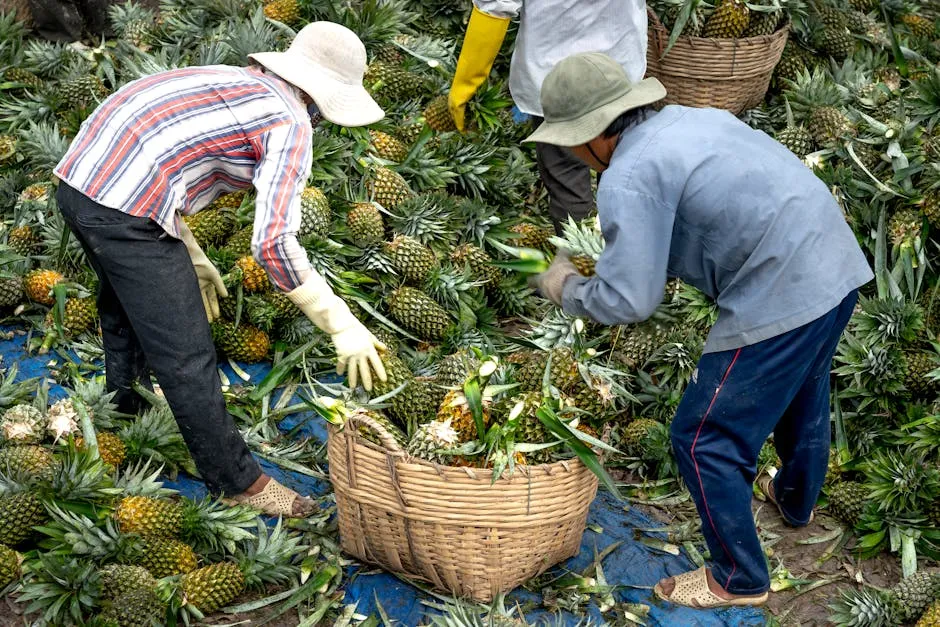
Propagation
Propagation opens the door to more pineapple plants, and there are two popular methods: using offsets and growing from the crown.
Offsets
Offsets are the baby plants that sprout from the base of the pineapple. They typically emerge after the mother plant produces fruit. To identify an offset, look for small shoots that resemble miniature versions of the parent.
Once spotted, it’s time to separate them. Using a clean, sharp knife, carefully sever the offset from the main plant, ensuring you include some roots. Handle these little ones gently; they’re delicate!
After severing, pot each offset into its own small container filled with a well-draining potting mix. Water lightly and place them in a warm, bright location. In a few weeks, these offsets will establish roots and become independent pineapple plants. It’s like giving them a new lease on life!

Growing from the Crown
Growing a new pineapple from the crown of a store-bought fruit is a fun and rewarding method. Here’s how to do it step by step:
1. Select Your Pineapple: Choose a ripe pineapple with vibrant green leaves.
2. Cut the Crown: Use a sharp knife to slice off the crown, leaving about an inch of fruit below.
3. Remove Lower Leaves: Trim off the lower leaves to expose the base. This helps with root growth.
4. Let It Dry: Allow the crown to dry for a day or two. This prevents rot when planted.
5. Plant It: Fill a pot with a mix of orchid compost and peat-free potting mix. Bury the crown about an inch deep.
6. Water Sparingly: After planting, water lightly. Keep the soil moist but not soggy.
In about two to three months, you’ll see roots developing. With patience and care, your crown will grow into a lovely new pineapple plant!
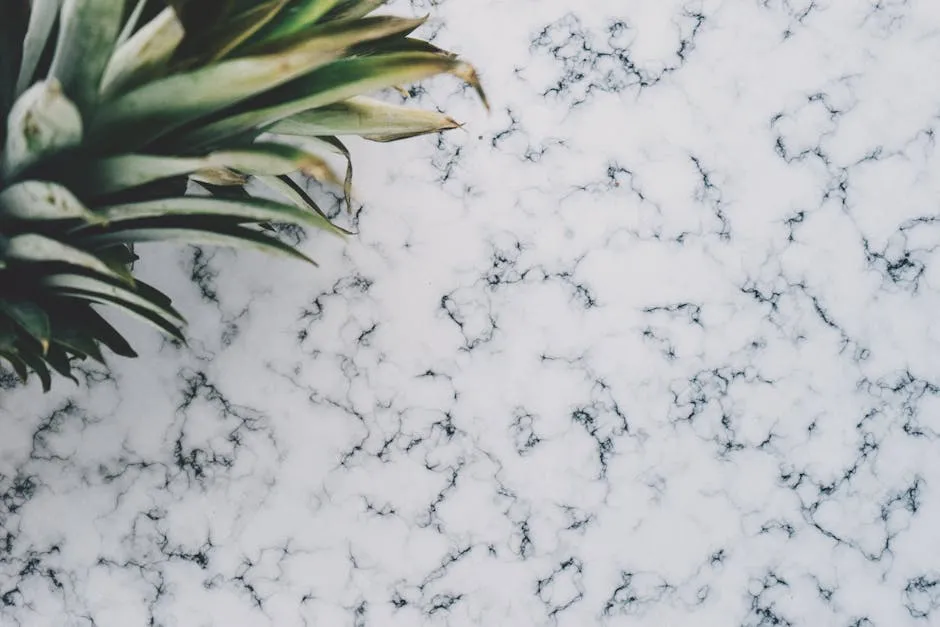
Troubleshooting
Common problems can pop up while growing pineapples. Yellow leaves often signal overwatering. If you see this, check the soil moisture and adjust your watering routine. Lack of fruit could indicate your plant is still too young. Pineapples typically flower around two years old and bear fruit six months later.
If you notice pests like mealybugs, wipe them off with a cotton ball soaked in insecticide. Lastly, if your plant seems to be dying back, it’s normal after fruiting. Look for offsets to propagate new plants. Remember, every challenge is an opportunity to learn!

Buying a Pineapple Plant
Ready to bring home a pineapple plant? You’re in luck! Pineapple plants are widely available at garden centers, supermarkets, and online retailers. Check the houseplant section for healthy specimens.
Look for plants with vibrant green foliage and, if possible, a small fruit forming. This is a good sign of a robust plant. Online options include retailers like Thompson & Morgan and You Garden.
When selecting, avoid plants with yellowing leaves or signs of decay. A healthy pineapple plant is the first step toward your tropical adventure!

Varieties of Pineapple to Grow
When it comes to pineapple plants, variety is the spice of life! Let’s explore some popular choices that will bring both beauty and fruit to your home.
First on the list is the classic Ananas comosus. This is the variety most people think of when they imagine fresh pineapples. With its spiky green leaves and the potential for sweet, juicy fruits, it’s a must-have for any pineapple enthusiast. Typically, it can grow tall and wide, making it a striking addition to your indoor garden.
Next up, we have the Ananas comosus var. variegatus. This beauty showcases dark green leaves adorned with cream stripes. While its fruit is more on the bitter side, its unique foliage makes it a popular choice for ornamental purposes. It stands out at around 60cm tall, bringing a tropical vibe to any space.
For those who prefer something smaller, the Ananas comosus ‘Champaca’ is an ideal selection. This evergreen variety features deep green leaves and produces ornamental fruit, which adds a charming touch to your decor. It’s compact, reaching about 50cm in height, making it suitable for limited spaces.
Another delightful dwarf option is the Ananas comosus ‘Corona’. Originating from Brazil, this variety has silver foliage and produces tiny, inedible fruits. Its petite size—standing at about 40cm—makes it perfect for windowsills or small tables, where it can thrive without taking up too much room.
Lastly, consider the Ananas comosus ‘Amigo’. Similar to ‘Corona’, this dwarf variety boasts fresh green foliage and reaches a height of around 40cm. Its compact nature makes it an excellent choice for those looking to add some tropical flair without overwhelming their space.
Whether you’re after the iconic sweet fruit or simply want to enjoy these stunning plants as decor, there’s a pineapple variety for everyone. Choose wisely, and get ready to enjoy the fruits of your labor—or at least the gorgeous greenery!
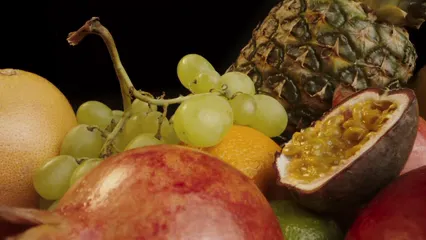
FAQs
Can I grow a pineapple plant indoors?
Absolutely! Pineapple plants thrive indoors, provided they receive plenty of bright light. A sunny windowsill or a heated greenhouse works wonders. Just remember, they enjoy warmth, so keep the temperature above 16°C (60°F). With the right conditions, your indoor pineapple will flourish and possibly reward you with fruit down the line!
How long does it take for a pineapple plant to produce fruit?
Patience is key here! Typically, a pineapple plant takes about three to four years to bear fruit. Yes, it’s a long wait, but the anticipation makes it all the sweeter! Once it starts growing, you’ll be reminded of the delicious reward waiting at the end. Just think of it as a gardening marathon!
What are the common pests that affect pineapple plants?
Pineapple plants can attract a few pesky critters. Common culprits include mealybugs and scale insects. If you spot these little invaders, don’t panic! A cotton ball soaked in insecticidal soap can help wipe them away. For those annoying fungus gnats, let the soil dry out between waterings. Your pineapple will thank you by staying healthy and happy!
Can I grow a pineapple plant in a pot?
Yes, indeed! Growing a pineapple in a pot is not only possible but also quite popular. Just ensure you pick a container with good drainage. A mix of orchid compost and peat-free potting mix is ideal. With proper care, your potted pineapple will thrive and might just surprise you with its tasty fruit!
Is it necessary to fertilize a pineapple plant?
Fertilization is essential for happy, healthy pineapples. During the growing season, feed your plant every two weeks with a balanced liquid fertilizer. In the winter, you can cut back to once a month. This nutrient boost helps your pineapple grow strong and increases the chances of fruit production. Happy planting!
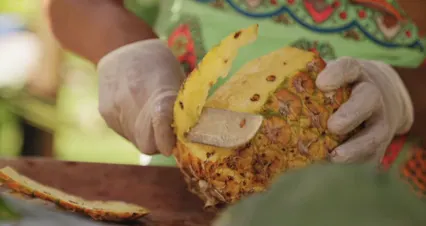
Conclusion
In conclusion, growing a pineapple plant can be a rewarding experience that brings a touch of the tropics into your home. From understanding its rich history to mastering the care and propagation techniques, this guide serves as your complete resource. Whether you’re looking to impress guests with exotic fruits or simply want to cultivate a unique houseplant, the pineapple plant offers endless possibilities.
Imagine walking into your kitchen and spotting a vibrant pineapple plant, a symbol of your gardening triumphs. It’s not just a plant; it’s a conversation starter! Friends and family will marvel at your green thumb and your ability to grow such a delightful fruit. Plus, there’s something incredibly satisfying about sinking your teeth into a pineapple you nurtured from a simple grocery store crown.
But remember, patience is key. Pineapples can take a few years before they bear fruit. It’s like waiting for a good movie to unfold—worth every moment! And while you wait, you’ll enjoy the lush greenery and striking appearance of your plant. You might even find joy in the little things, like giving it a new pot or watching the leaves unfurl.
As you embark on this pineapple adventure, don’t forget to share your journey. Post pictures of your plant on social media, join online gardening communities, and swap tips with fellow pineapple lovers. You’ll find that the world of gardening is full of supportive and enthusiastic people who share your passion.
So roll up your sleeves, embrace your green thumb, and let the pineapple adventure begin! Your tropical oasis awaits, and who knows? You might just become the proud owner of the most talked-about pineapple plant in town! Happy planting!
Please let us know what you think about our content by leaving a comment down below!
Thank you for reading till here 🙂
And hey, if you want to take your pineapple passion to the next level, check out this Pineapple Cutting Board for all your slicing needs or a Pineapple Slicer Tool to make your fruit prep a breeze!
All images from Pexels



